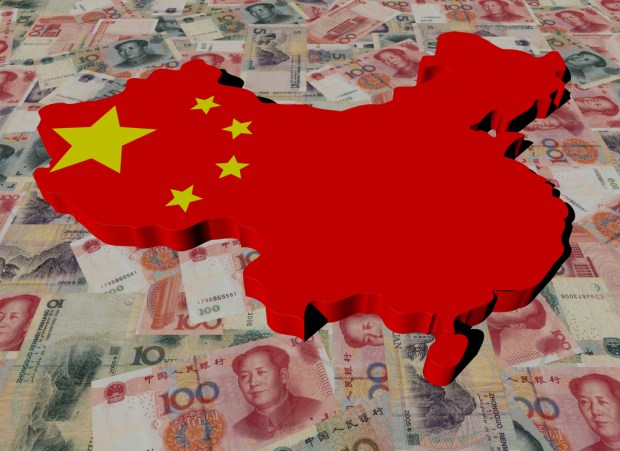Why B2B Payments Innovation Is Key To China’s Global Standing

B2B payments are an instrumental component of global trade and of setting the stage for currencies to operate as global instruments of cross-border trade.
China’s renminbi (RMB) is one global currency that is pushing its international standing, but new data from SWIFT released earlier this month found 2017 was a mixed year for the currency. RMB usage made up 1.61 percent of domestic and cross-border payments in December 2017, SWIFT found, with the company’s Head of Payments Markets, Asia-Pacific, Michael Moon noting, “Experts suggest that capital controls and uncertainties over future regulations mean that a significant reversal of the decline in RMB usage for trade and payments is unlikely in 2018.”
But China is also pressing for payments innovation, SWIFT noted, as industry players like Alibaba promote digital payments and more China-based financial institutions (FIs) join SWIFT’s global payment innovation (gpi) initiative.
In a chat with PYMNTS, Moon emphasized the role of cross-border B2B payments in the ability of the RMB to remain a strong contender in global payments.
“There is a direct correlation between usage of RMB for trade and cross-border payment and RMB internationalization,” he said. “This is particularly true as improving the payment experience, in terms of velocity of settlement, transparency and traceability, is a positive impact on commerce by [making it easier to do] business in places like China.”
It could be key to the broader Chinese economy too.
Research released by Atradius last October predicted the nation’s economic growth to slow. Of the entire Asia-Pacific (APAC) region, Chinese companies are the least likely to sell to B2B corporate customers on credit terms, and the nation also has the region’s highest percentage of late B2B payments, with 96 percent of survey respondents reported having been paid late by foreign B2B customers.
According to Atradius, the most common cause of late payments on foreign invoices is due to “inefficiencies of the banking system,” cited by nearly 42 percent of respondents, followed by the complexity of payment procedures, cited by nearly 36 percent.
SWIFT’s Moon said, however, that China is taking steps to address these challenges, which is, in turn, impacting the nation’s B2B payments landscape and the RMB’s position on the global market.
“In China, we see banks providing tracking and payment outcomes to corporate treasurers [and] making use of advances in mobile technologies and API-oriented services,” he said. “Corporate treasurers benefit from this as it gives them transparency on how much money they have, how much is coming in and the certainty of when this money will arrive. This allows corporates to trade with more confidence around the world, which, in turn, can only be good for global business.”
That may be true in theory, but today, China is struggling a bit to achieve these goals.
Separate analysis from Atradius published last September concluded that China is shifting its economic strategic away from global trade toward consumption. Though this change is slow and gradual, researchers calculated significant impacts on import growth.
“The Chinese government is aiming for a slow, gradual adjustment of its economy,” Atradius concluded, “but it remains a balancing act.”
Despite this strategy, China remains focused on boosting the global standing of the RMB. It won’t be easy, however. Earlier data from SWIFT released last year found the RMB slipped from fifth place to sixth in a ranking of global currencies.
“In order to become a more international currency,” explained Moon, “the RMB needs pervasive connectivity across banks, market infrastructures and corporates at a global level, as well as an improvement of efficiencies of RMB products and services in line with global standards.”
Last month, China’s central bank took another step to improving the nation’s cross-border payments capabilities. Three unnamed sources told Reuters that Chinese officials are opening up its large-value payment system to operate 21 hours a day, with the ability to process payments overnight.
In addition to national policy, Moon added that FinTech and payments innovation will undoubtedly play a role in helping the financial services community achieve these improvements.
“Today China’s payments landscape is a very dynamic one,” he said. “Making payments in RMB more digitized and [making] RMB cross-border payments faster, trackable and transparent in terms of fees will definitely support RMB internationalization.”
“Blockchain also has the potential to play a part in this,” the executive added, pointing to SWIFT’s efforts in its gpi initiative to collaborate with banks and deploy blockchain technology to enhance real-time payments reconciliation.
“Under the current correspondent banking model, banks need to monitor the funds in their overseas accounts via debit and credit updates and end-of-day statements, which represents a significant portion of the cost of cross-border payments,” Moon said, adding that SWIFT will release analysis of the proof of concept it is developing under the gpi initiative “in the coming weeks.”
According to SWIFT, there are now 22 China-based banks participating in gpi, signaling the nation’s support for payments innovation and an interest in addressing friction in global B2B payments — which, in turn, is likely to support the RMB’s standing as a global currency.
But gpi, which launched for live payments in January 2017, can now facilitate payments across 60 country corridors, so China is far from the only market embracing payments progress and fighting for internationalization.
